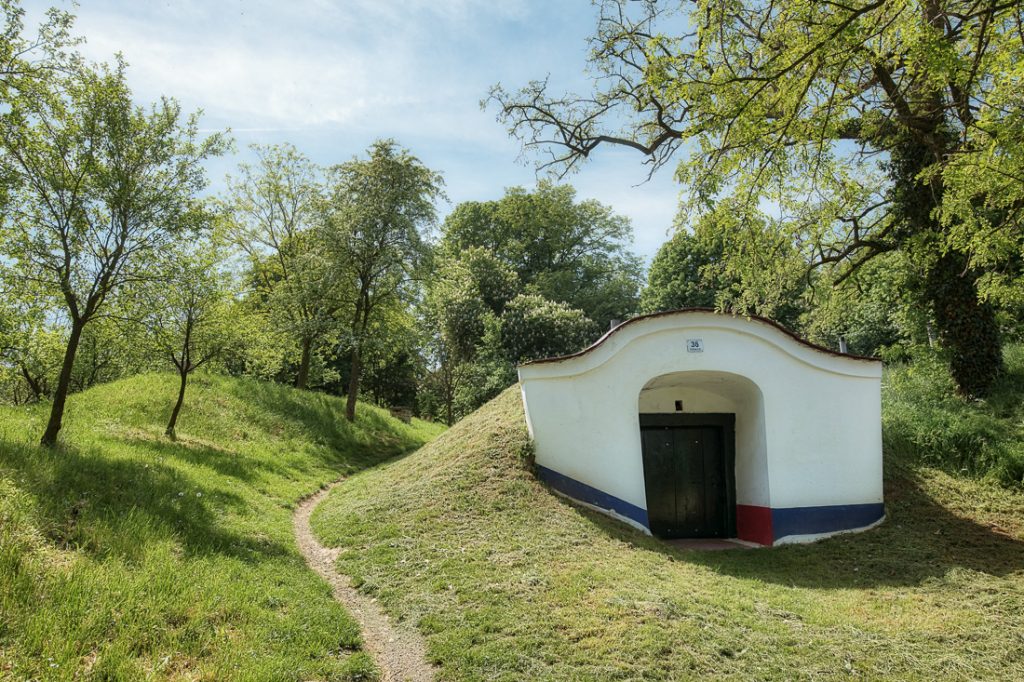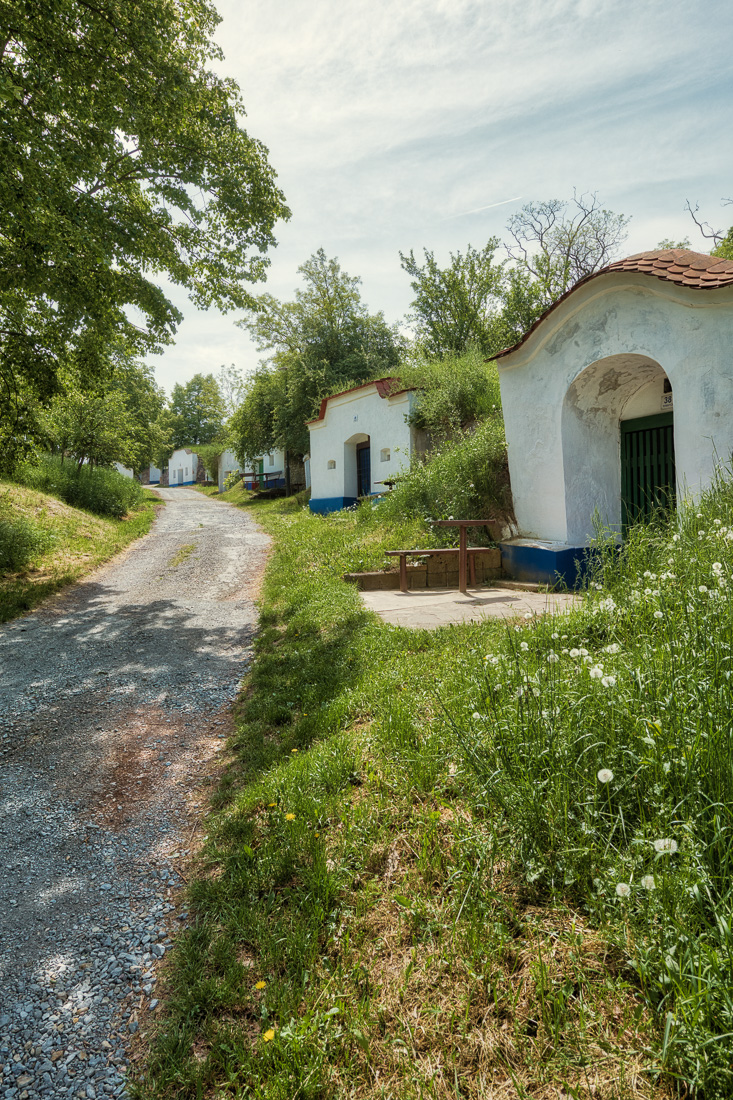One of the most beautiful gems of traditional folk architecture in the South Moravian Region is located near Strážnice in the direction of Hodonín. On the slope above the village of Petrov, there’s a place called Plže which consists of about eighty wine cellars. Since the 15th century, the buildings and vineyards were built continuously at the same time. The references can be found in historical documents from the 16th and 17th centuries. The local inhabitants not only stored wine in the buildings, but they hid there during the war events.
The name Plže is derived from the shape of the wine cellars excavated in the soft yellow clay. They are strengthened by a barrel vault. The charm and the attractiveness of the place increase the fact that you can reach the destination by road, by train, or you can use a cycling route. Moreover, you can go the by a boat because Baťa Canal goes through Petrov.

Just quicklime and ultramarine and the magic is done
Thanks to the good location of Petrov on the banks of the Morava River, we are able to enjoy that gem of folk architecture which was classified as a cultural heritage site in 1983. In the past, winemakers couldn’t build cellars under their homes due to high levels of groundwater so they were forced to build the cellars on a slope just outside of the village. Thanks to these events, a compact area of cellars and aisles were created. These aisles lead towards two pastures where they create natural centres of the vineyards. The upper area is surrounded with the most art valuable wine cellars and all the aisles lead right there. During the summer tourist season, the upper area is used as a natural auditorium where you can watch a number of folklore events.
The so-admired architecture of the vine cellars is mostly based on local conditions. The gable walls of the parts above the ground were plastered by winemakers under the supervision of skilled masonry masters. The gables are protected by clay tiles and the frontage of the cellars may remind of rural baroque buildings. The blue (ultramarine) folklore ornaments complete the white plastered wall coating and the combination with surrounding greenery result in beautiful aesthetic impression.

The cellars were used as shelters
The cellars themselves are about three metres wide and go in length of fifteen and sometimes even more metres underground. The huge layer of clay and its strength helps to maintain convenient indoor climate that is essential for the quality of wine. All cellars have three parts. The entrance room is usually at terrain level and is used for a wine press device and as a warehouse. The room is connected with a narrow passageway leading to the cellars.
The oldest cellars are supposed to have the ‘loch’ which is a natural pit with walls made of burnt clay. They were used as a shelter for valuables, supplies and it is said that even for children. Due to the nearby Slovak (formerly Hungarian) border, local people had many opportunities to use cellars to rescue their lives and wealth. During World War II, many people who were crossing borders from the Protectorate to Slovakia hid in these wine cellars…
If you go to Moravia during summer, you should definitely visit Plže in Petrov. Not only for the historical and architectural value of the buildings but also for their ‘content’. At the entrance, the wine shop is open during summer so you can taste all the delicious local wines.
For more information, please visit the Petrov website — www.obec-petrov.cz
Source: Contributors of Wikipedia, ‘Plže’, Wikipedia:
Open Encyclopedia, June 6, 2017
Contributors Wikipedia, Petrov (district Hodonín) ‘, Wikipedia: Open Encyclopedia, 29. 10. 2017



